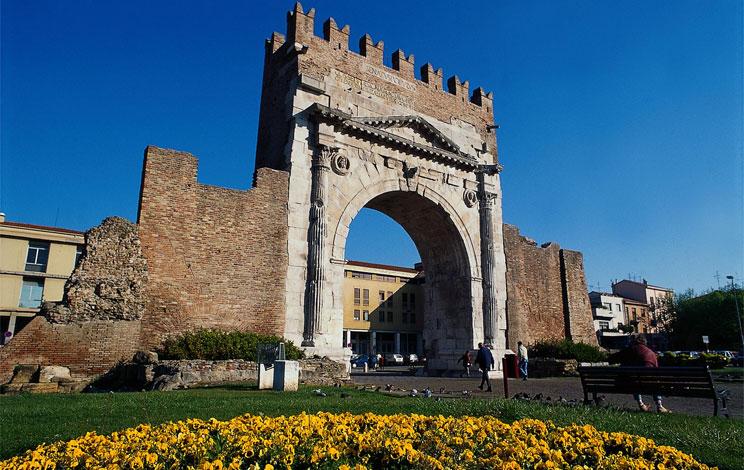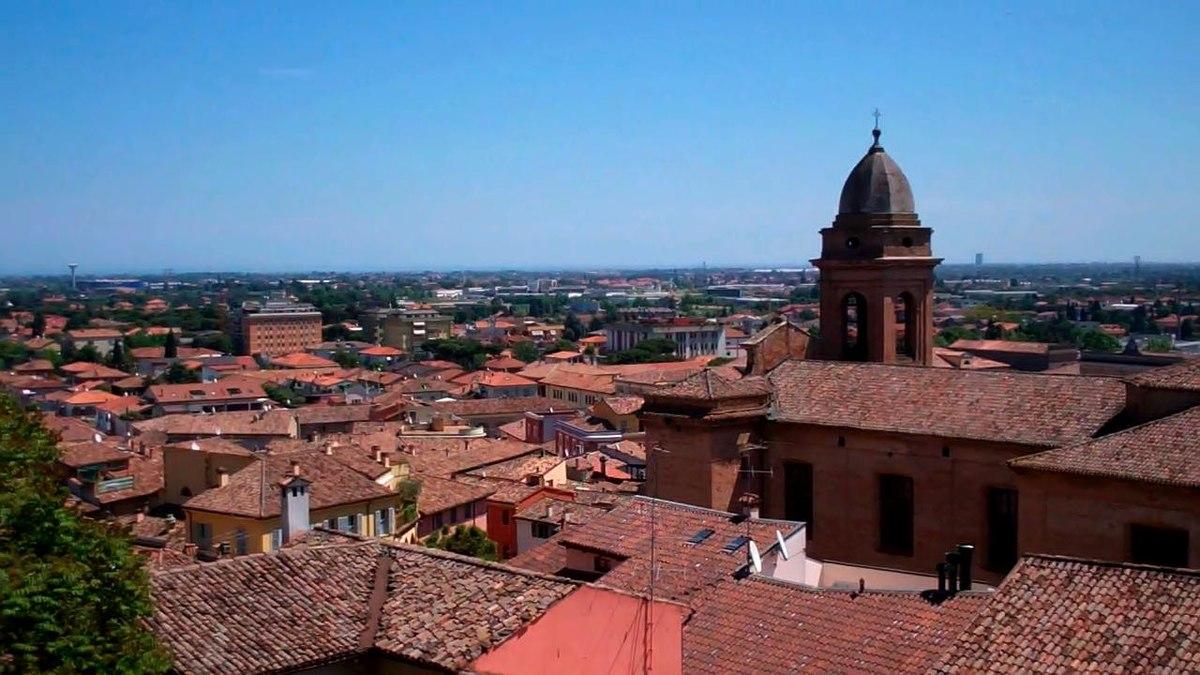L'Augustus Arch in Rimini was built in 27 BC in honour of Caesar Octavian Augustus and is one of the oldest arches in Roman history that can still be seen today.
This structure delineates the meeting point between the Via Flaminia, the road that connected Rimini and Rome, and the Via Emilia, another major communication route with a very long history.
This arch was made of Istrian stone, is approximately 10 metres high and is richly decorated with friezes charged with political and propagandistic meanings.
It is possible to recognise, for example, among the various friezes, in four clipei, the four deities, Jupiter, facing Rome, the most important for the Romans, Neptune, facing the city, god of water, Apollo, facing Rome, goddess of health, Minerva, facing the city, goddess of arts and crafts.

On the faces of the arch are two ox heads, emblematically testifying that Rimini was a Roman colony.
Tradition has it that a quadriga led by Augustus was placed on top of the arch. In the Middle Ages, the arch was called Porta Aurea (Golden Gate) and the upper part was removed to reconstruct a battlement dating back to around the year 1000. It has only recently been renovated and restored.
The arch was the gateway to Ariminum within a square frame of walls and towers that surrounded this Roman colony.
Seen as a city gate, it stood as a symbol of peace and communication between peoples and cultures. Its size shows that a door could not be supported by the arch as it could not be closed. In fact, it is well known that the Emperor Augustus' policy of peace, the so-called Pax Augustea, would not have needed a door to defend against attacks.
Tourism Department of the Municipality of Rimini, Piazzale Fellini 3, 47900 Rimini Tel. 0541 704587




